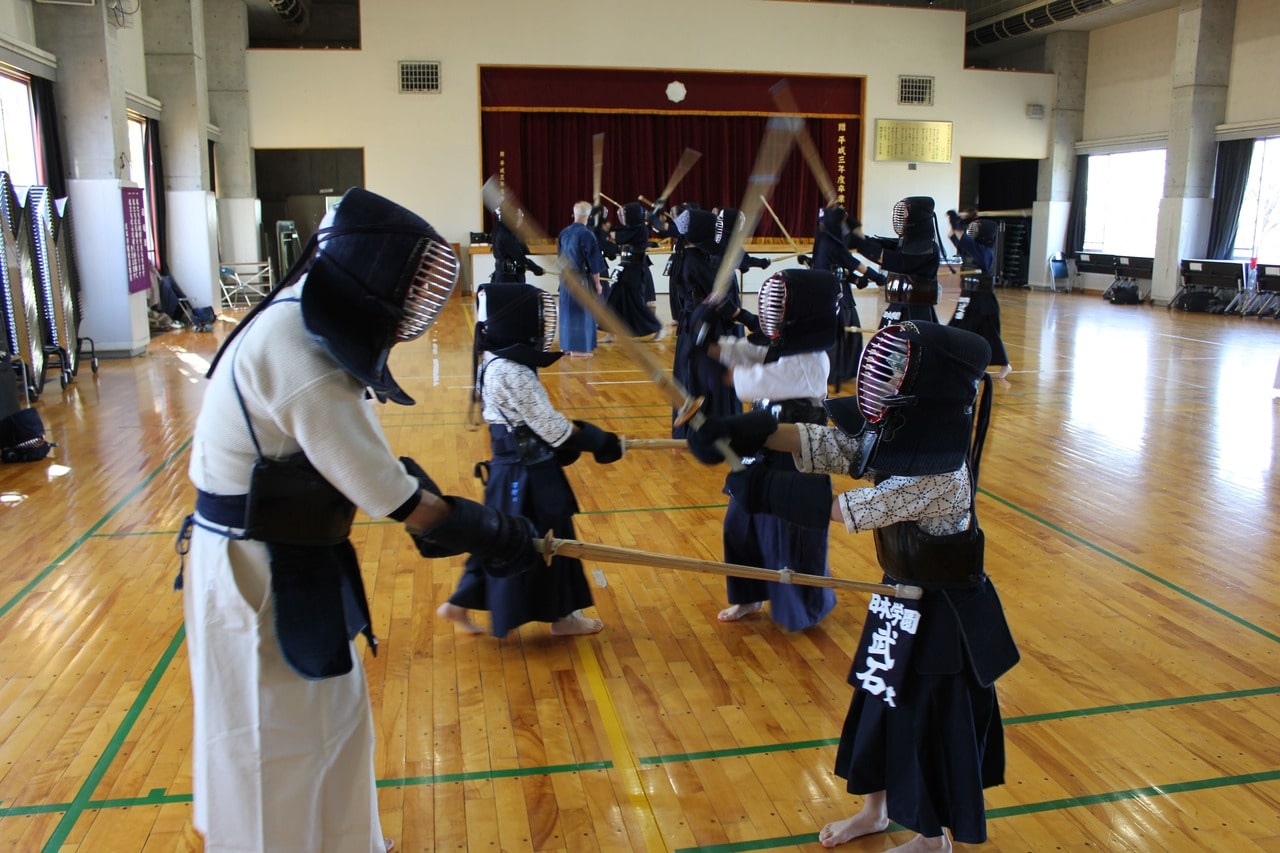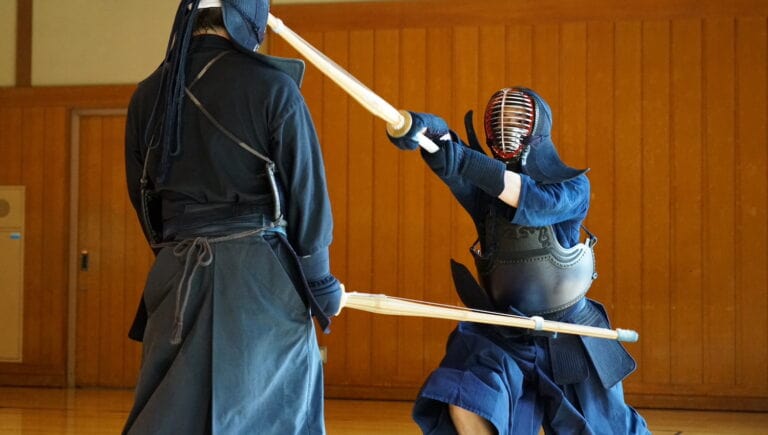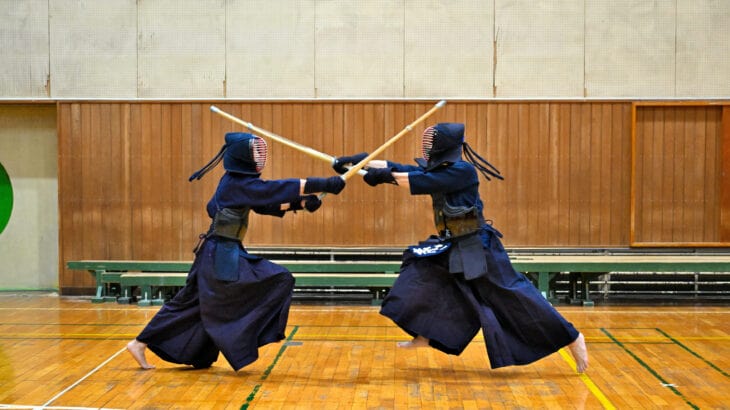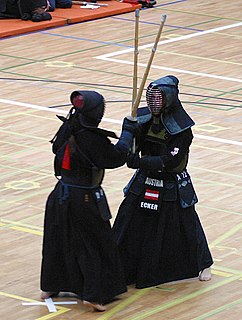
Kendo is more than just a sport. It is a Japanese martial art that comprehensively trains an individual’s mind, technique, and body, and is characterized by its unique philosophy and rigorous training.
People who practice Kendo are said to have certain physical and mental characteristics, but what are they like?
In this article, we explore the common characteristics of people who practice kendo and how kendo influences their daily lives.
We’ll also go into detail about the physical and mental benefits of Kendo practice, and explore the differences between Kendo and other martial arts.
In the following headings, we will take a closer look at what Kendo is, from its basic understanding to its historical background.
目次
- 1 Introduction: What is Kendo?
- 2 Common points among people who continue to practice Kendo
- 3 Kendo fosters humanity
- 4 How to practice Kendo and its impact on daily life
- 5 Differences between Kendo and other martial arts
- 6 Guide to getting started with Kendo
- 7 Frequently asked questions and answers (FAQ)
- 8 Summary and next steps
Introduction: What is Kendo?
Kendo is a traditional Japanese martial art that refines not only technique but also spirit.
In this section, we will delve into the basic understanding of Kendo and its historical background.
Basic understanding of Kendo
Kendo literally translates to “the way of the sword,” but the practice is much more than just swordsmanship.
Kendo is not only about techniques using a sword, but also aims to improve an individual’s spirituality and hone their morals.
Kendo practice is done using a bamboo sword (shinai) and wearing protective gear.
It is often played in a competitive format and focuses on learning proper posture, striking techniques, and tactics.
Historical background of Kendo
Kendo’s origins date back to the tactics and training methods of ancient Japanese samurai.
Specifically, it can be traced back to the late Heian period, and its form evolved over time.
Many schools of swordsmanship existed at the end of the Edo period, and the foundation was formed for systematization as Kendo after the Meiji Restoration.
In the 20th century, Kendo was incorporated into Japan’s educational system and became popular as a cultural activity that valued both spirituality and physical training.
Even today, Kendo remains an important part of Japanese culture and is widely practiced around the world.
Understanding this background makes it clear that Kendo is not just a martial art, but a cultural activity with deep philosophical and educational meaning.
In the following headings, we will take a closer look at what people who practice Kendo have in common and how Kendo influences their personalities and lives.

Common points among people who continue to practice Kendo
Mental and physical characteristics can be seen in people who practice Kendo.
These characteristics are developed through long periods of Kendo training and have a direct impact on a Kendo practitioner’s performance.
Mental traits: patience and concentration
Kendo requires more than just physical training. In particular, patience and concentration are very important mental characteristics when practicing Kendo.
Kendo training is often repetitive and demanding, and requires a high degree of sustained concentration.
This develops the ability to perfect the sequence of movements and shapes seen during practice.
In addition, in matches and judging, split-second decisions can determine victory or defeat, so it is necessary to maintain a high level of alertness at all times.
Experience in such an environment provides a psychological foundation for Kendo practitioners to deal with difficult situations in their daily lives.
Physical characteristics: Flexibility and reaction speed
It is common for Kendo practitioners to develop flexibility and quick reaction times.
Kendo movements often require speed and precision, so these physical abilities are essential for improving technique.
Flexibility increases freedom of movement while wearing protective gear and reduces the risk of injury.
In addition, quick reaction speed allows you to quickly respond to your opponent’s movements, which is important for effective striking.
Kendo training involves a variety of drills and physical training to maintain and improve these physical characteristics.
These characteristics of those who practice Kendo are the result of long periods of rigorous training and self-improvement.
These characteristics make it clear that Kendo is not just a competition, but a mental and physical training that can be continued throughout one’s life.
In the next section, we will delve deeper into the humanity that Kendo fosters.

Kendo fosters humanity
Kendo is not just a martial art, but also a way to develop the humanity of its practitioners.
It has a particularly significant impact on civility and respect, as well as the development of community service and teamwork.
spirit of civility and respect
Kendo training places great importance on etiquette.
Courtesy is required in everything, from greetings at the dojo and bowing before and after practice, to actions that show respect for judges and opponents.
Such an environment forces kendo practitioners to internalize the importance of respect and deference in interpersonal relationships.
Kendo also promotes mutual understanding and personal growth by respecting not only one’s own skills but also the skills of others.
Community contribution and teamwork
While Kendo focuses on improving individual skills, it also fosters a spirit of cooperation and teamwork through community activities such as dojos and competitions.
Kendo practitioners have the opportunity to participate in many group activities, such as team competitions, dojo management, and community demonstrations.
These activities provide an opportunity for Kendo practitioners to share their skills and learn the importance of collaborating with other members.
Active contribution to the community is recognized by Kendo practitioners as an action that benefits both themselves and others, and instills a spirit that encourages active participation in society as a whole.
Kendo thus goes beyond technical training and functions as a cultural activity that fosters the moral and social maturity of its practitioners.
These values cultivated through Kendo will have a positive impact on a person’s actions and decisions in daily life.
In the next section, we’ll go into more detail about how to practice Kendo and how it affects your daily life.

How to practice Kendo and its impact on daily life
Practicing Kendo has a deeper meaning than just physical exercise, and it has a great impact on daily life.
This section delves into Kendo’s daily practice routine and its impact on your life, as well as the psychological and physical benefits that the practice brings.
Daily practice routine and its impact on life
Kendo practice routines typically include repetition of basic movements, kata practice, and free kumite.
These exercises contribute not only to improving physical strength and technique, but also to improving self-control and patience in daily life.
Kendo practitioners usually practice at a dojo every day or several times a week, following a set timetable.
This regular routine helps develop time management skills and a sense of responsibility.
Mental concentration exercises at the end of the day can also help relieve stress and help you maintain a calmer state of mind.
Psychological and physical benefits of practice
Kendo practice has many psychological and physical benefits.
Physically, it improves overall body strength, flexibility, and endurance. This is because the movements and repetitive exercises unique to Kendo train the muscles evenly.
Psychologically, Kendo helps you push your limits and build confidence.
Kendo training also increases your concentration, and by concentrating on each movement, you can improve your concentration in daily life.
Furthermore, by learning the importance of overcoming defeat and moving forward, children develop a strong spirit in the face of adversity.
Practicing kendo is more than just physical exercise for kendo practitioners; it is a means to improve the quality of life and bring about positive changes in daily life.
In the next section, we will further explore Kendo’s unique characteristics and appeal by comparing it with other martial arts.

Differences between Kendo and other martial arts
Kendo is known for its unique training methods and philosophy, which sets it apart from other martial arts.
This section details Kendo’s training methods and philosophy behind it, as well as how it compares to other martial arts.
Kendo’s unique training methods and philosophy
Kendo training focuses not only on the acquisition of physical techniques, but also on spiritual growth.
Basic training in Kendo includes “Basic Uchi” and “Kata,” which are aimed at improving not only Kendo technique but also spirituality.The philosophy of Kendo is based on the idea that “Kendo is a way of forming a person through the way of the sword,” and aims to improve oneself and cultivate true human strength through the training of sword techniques.
Comparison with other martial arts
The biggest difference between Kendo and other martial arts is the use of bamboo swords and armor.
For example, compared to other martial arts such as karate and judo that focus on striking and throwing techniques, kendo uses a bamboo sword that resembles an actual sword and competes in the skill of striking an opponent.
This allows you to safely recreate situations similar to actual sword fighting.
Also, compared to martial arts such as judo, which mainly rely on throwing techniques and joint techniques, kendo differs in that it requires precision and precise timing of striking techniques.
Kendo is a martial art that focuses not only on the technical aspects but also on increasing the spirituality of the practitioner.
These characteristics show that Kendo is not just a competition, but a path of lifelong learning that encourages growth as a person.
In the next section, we move on to a practical guide to getting started with Kendo.

Guide to getting started with Kendo
Kendo is a traditional Japanese martial art that aims to develop character through physical and mental training.
Here we will provide specific steps to start Kendo, necessary equipment, and advice for beginners.
Steps to start Kendo
-
Find a dojo : The first step to learning Kendo is finding the right dojo. Find a dojo near you using referrals from friends or an internet search, and apply for a trial lesson.
-
Trial participation : Many dojos offer trial lessons for beginners. Try actually participating and check your compatibility with the instructor and the atmosphere of the dojo.
-
Introduction : If you feel that the dojo’s environment and instructional policies are suitable for you, you can formally enter the dojo. Depending on the dojo, you may be required to pay a membership fee or monthly fee at the time of entry.
Necessary equipment and advice for beginners
To begin Kendo, you will need basic equipment.
-
Shinai : A sword used for practice. Beginners usually rent a shinai at a dojo or purchase one on the advice of an instructor.
-
Protective gear : Equipment to protect the head, chest, and wrists. Beginners often use rental armor from a dojo at first, but if you decide to continue practicing Kendo, consider purchasing your own armor.
-
Kendo Gi : Special clothing worn during practice. Choose with emphasis on ease of movement and sweat absorption.
Advice for beginners
-
Cherish the basics : Basic movements are very important in Kendo. It may seem difficult at first, but it is important to keep practicing patiently.
-
Take care of your health : Kendo is an activity that requires physical strength. Get the most out of your practice with proper nutrition and rest.
-
Respect the guidance of your instructors and seniors : When practicing Kendo, guidance from experienced instructors and seniors is extremely important. Listen to their guidance, respect them and keep learning.
Starting Kendo will help you improve not only your technique but also your spirituality.
Keeping these points in mind before you begin will help you walk the path of Kendo smoothly.

Frequently asked questions and answers (FAQ)
By answering common questions about Kendo, you can clarify misconceptions about learning Kendo and deepen your correct understanding.
Answers to common questions about Kendo
-
Q: At what age can I start Kendo? A: Kendo can be started at any age. People of all ages, from children to the elderly, enjoy Kendo. Starting at a young age makes it easier to learn the basic movements and shapes, but adults can still learn the techniques and have fun even if they start.
-
Q: Is the equipment needed to practice Kendo expensive? A: Kendo equipment may seem a little expensive as an initial investment, but good quality equipment will last a long time, so it’s cost-effective in the long run. Many dojos also offer rental equipment for beginners, so you can reduce your initial investment.
Misconceptions and their corrections when learning Kendo
-
Misconception: Kendo is a dangerous sport Correction: Kendo is a sport with safety in mind. Wearing proper protective equipment and learning proper form and technique can minimize the risk of injury. Kendo emphasizes spiritual growth and self-discipline, and is not a violent sport.
-
Misconception: Kendo requires physical strength. Correction: Kendo is a martial art open to everyone. Although there are certainly situations in which physical strength is required, Kendo training can be tailored to suit individual physical fitness levels. One of the purposes of Kendo is to improve your physical strength, and by doing it continuously, you can naturally improve your physical strength.
Through these FAQs, we will provide clear answers to common questions and misconceptions about Kendo, help you understand Kendo more deeply, and help you get started with confidence.

Summary and next steps
Kendo offers more than just a martial art.
This section describes the lifelong skills gained through Kendo, as well as the paths and options for furthering your Kendo practice.
Lifelong skills gained through Kendo
Kendo not only provides technical skills, but also many valuable skills that are useful in life. This includes things like:
- Self-discipline : Kendo training requires self-discipline, and this skill is important in fulfilling your academic and workplace responsibilities.
- Perseverance and Persistence : Overcoming difficult training exercises teaches you to never give up in challenging situations.
- Improved concentration : Focusing and honing your skills will strengthen your ability to focus on any task.
- Leadership and Teamwork : Dojo activities develop the ability to work together to achieve goals.
These skills are naturally acquired through Kendo and are extremely useful in daily life and professional environments.
Careers and options to deepen your Kendo skills
If you want to further deepen your knowledge of Kendo techniques and philosophy, the following paths and options are available:
- Advanced training and education : You can receive specialized training to aim for higher ranks.
- Participating in national and international competitions : This is a great opportunity to test your skills and gain new experience.
- Career as an instructor : It is also possible to be involved in the training of younger students as a Kendo instructor.
- Cultural Exchange Program : You can deepen your understanding of different cultures through Kendo exchange overseas.
Kendo is a powerful tool for personal growth and self-actualization.
By following these steps, you will be able to experience the depth of Kendo even more and maximize its value.
Pursuing the path of Kendo will give you a deep sense of satisfaction and accomplishment that goes beyond just learning the techniques.







